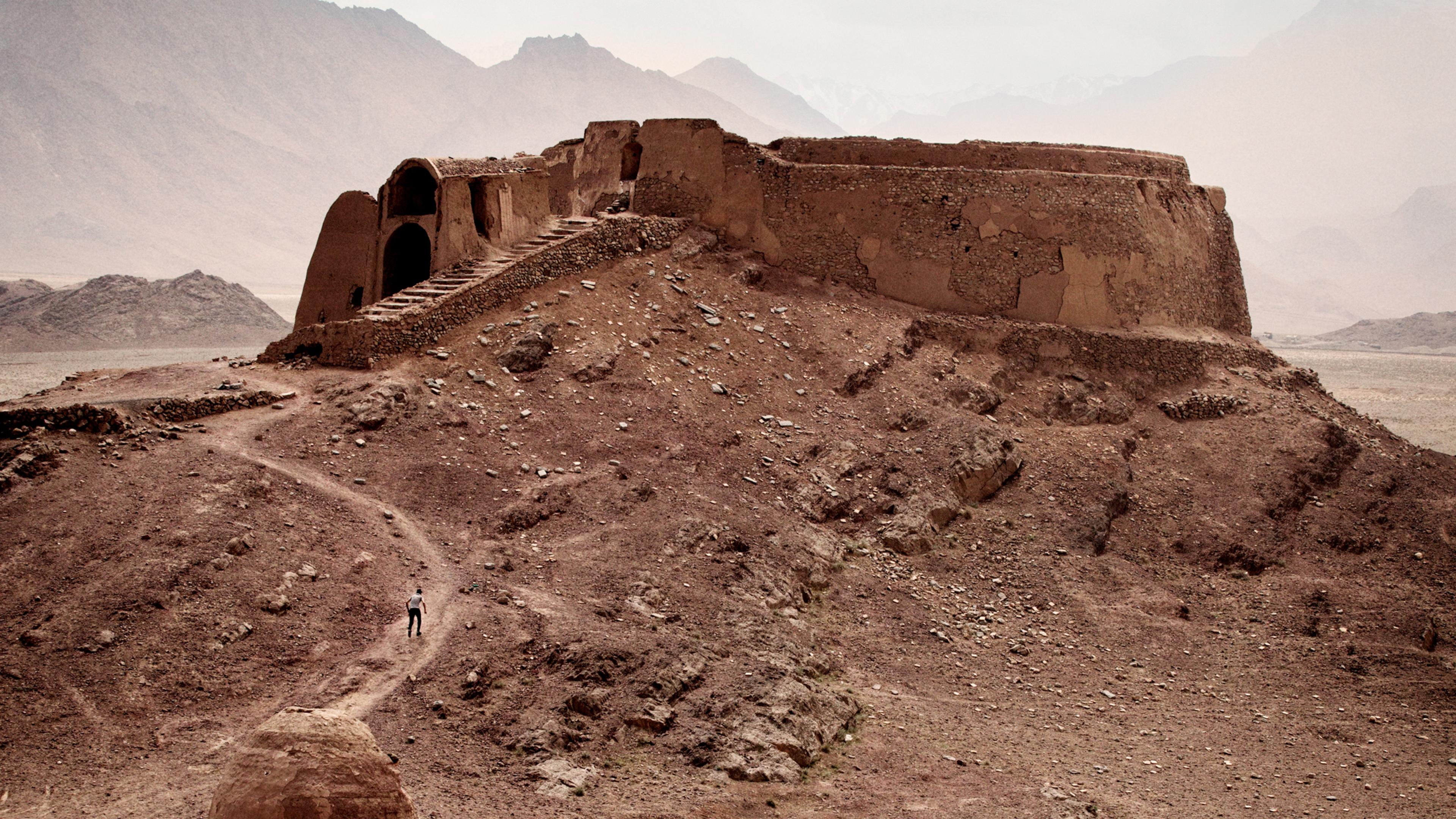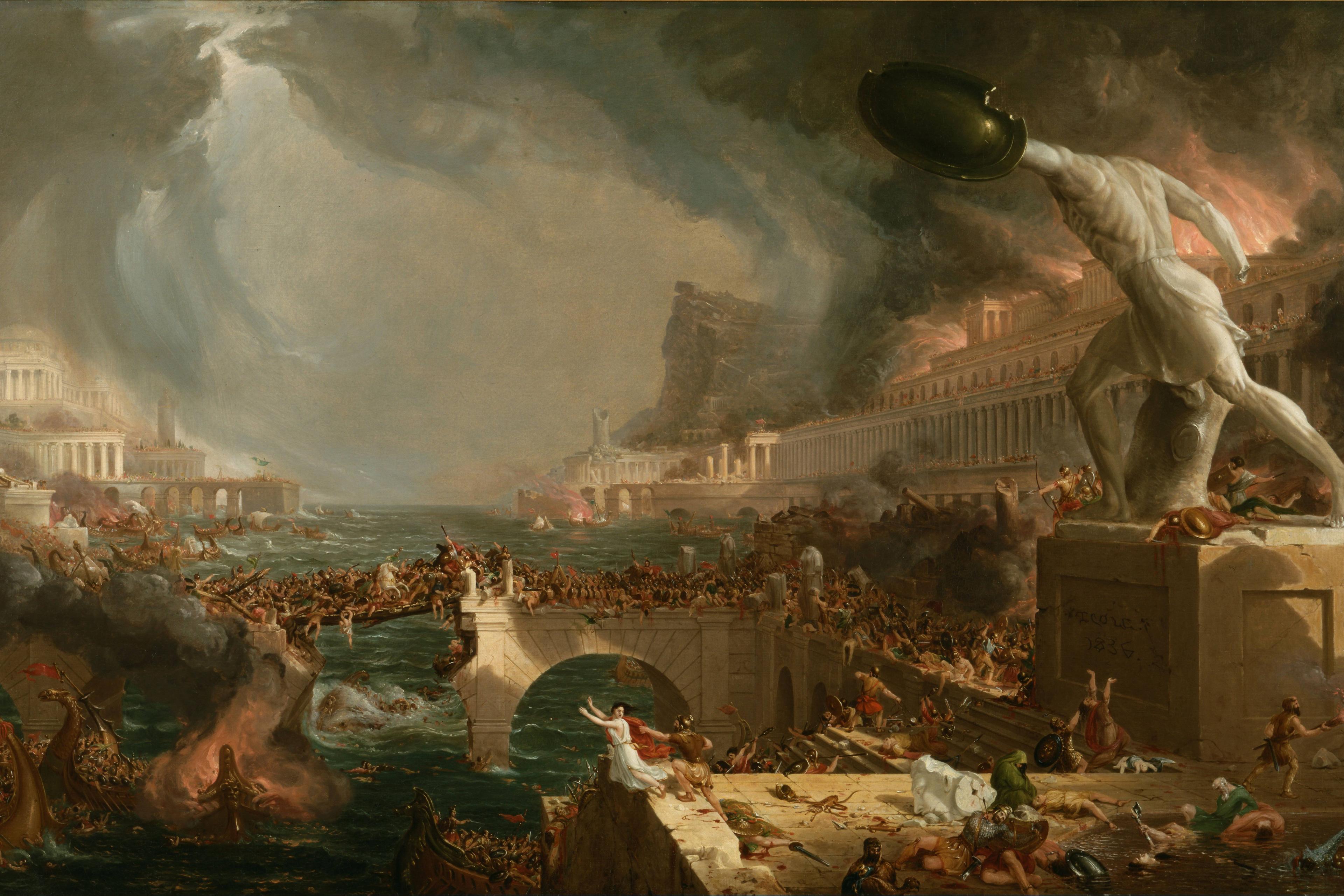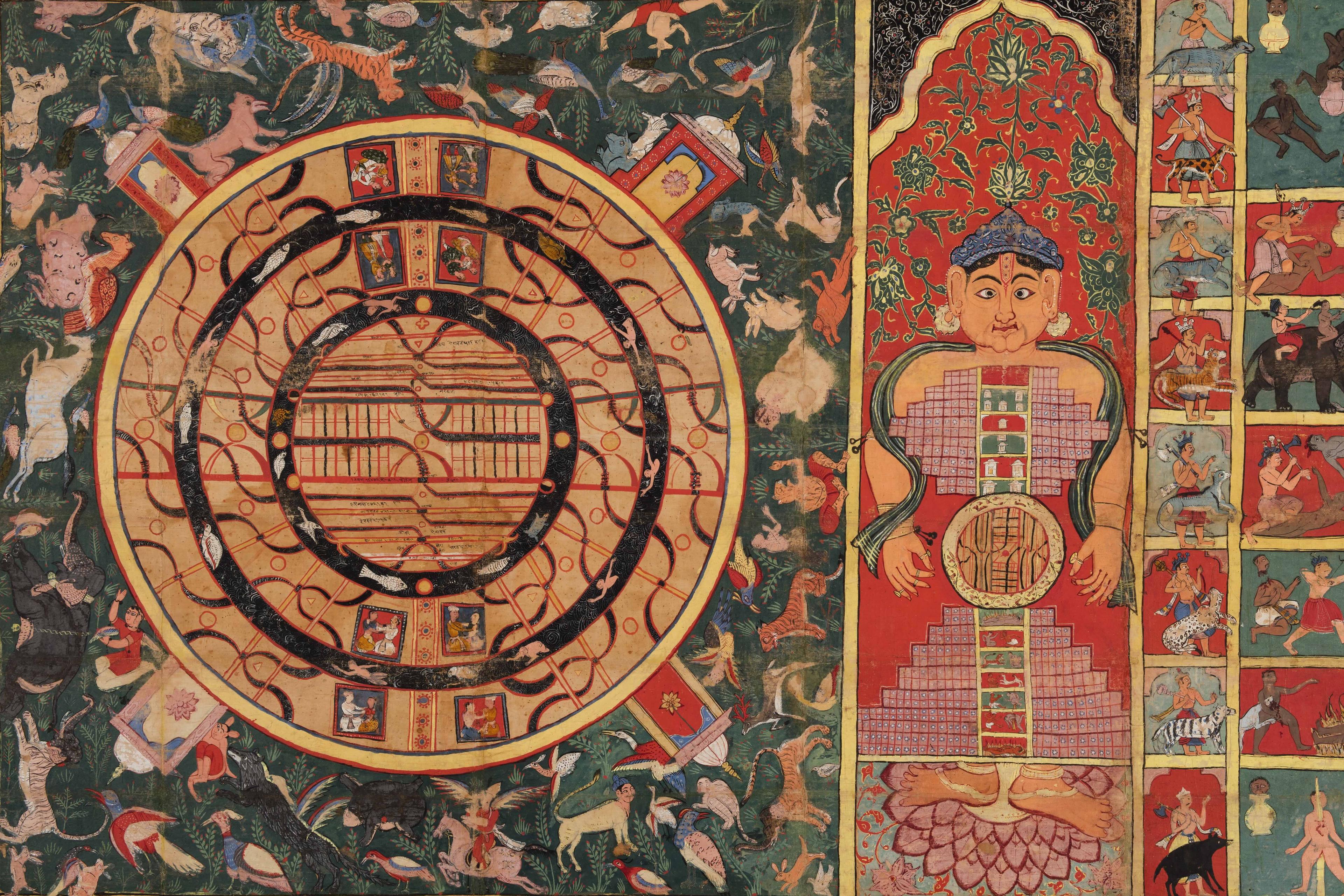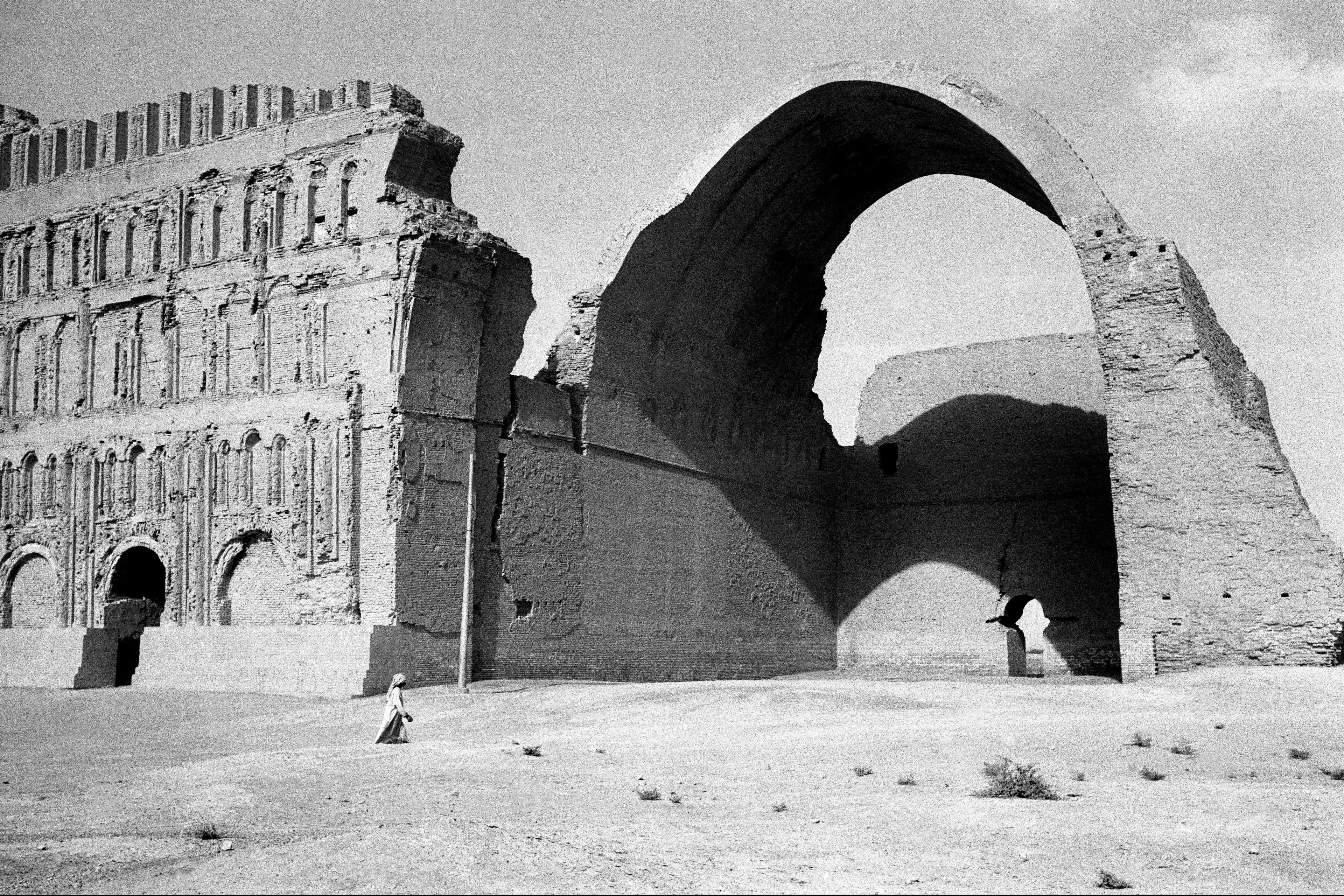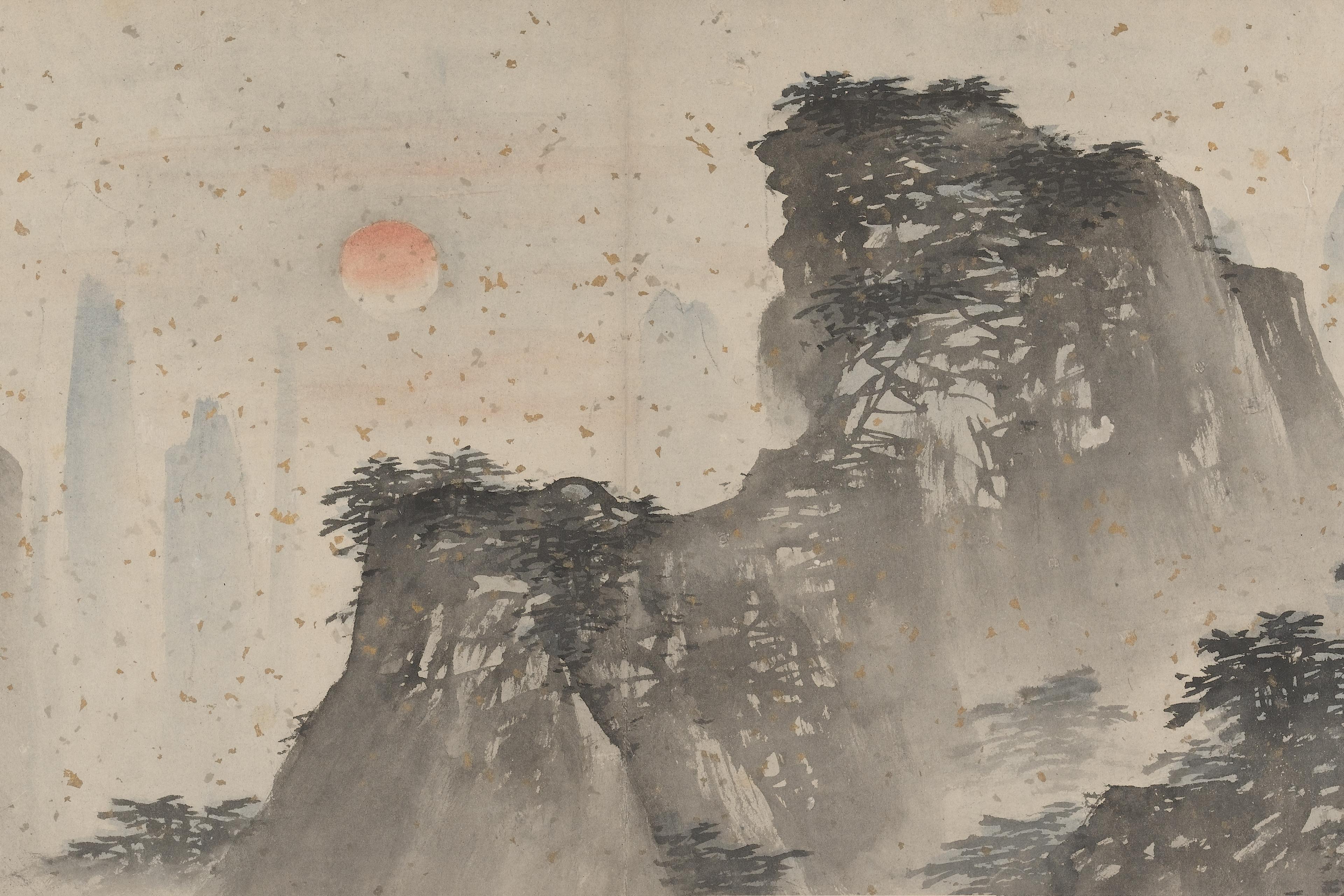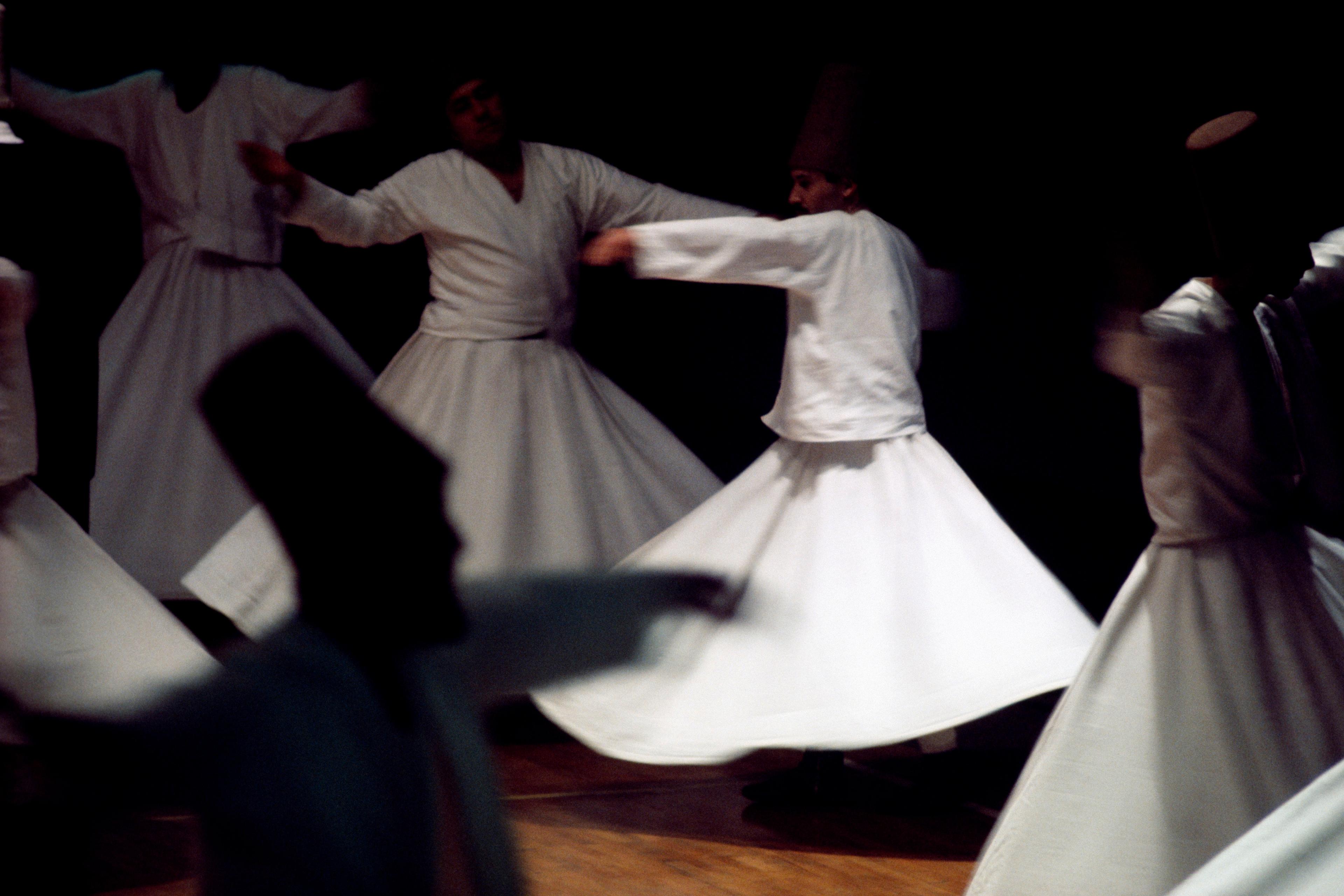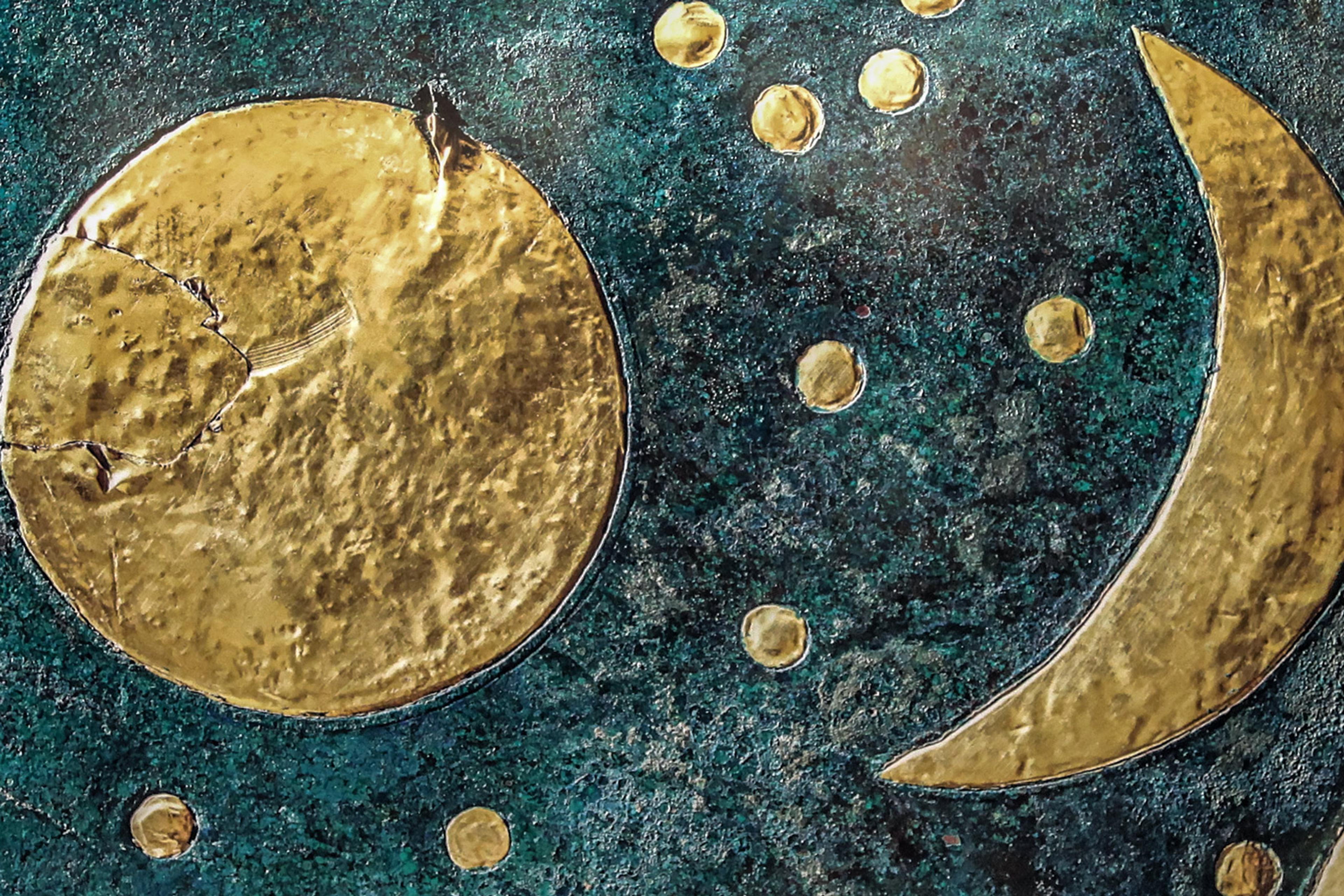At its height, around 620 CE, the Sasanian empire ruled over a territory stretching from Jerusalem in the west to Samarkand in the east. The royal court at the ancient city of Ctesiphon, near present-day Baghdad, was the political heart of this vast realm, and its official religion was the ancient Iranian faith, Zoroastrianism. In royal iconography, the king of the Sasanians was likened to Ohrmazd, the good creator God: just as Ohrmazd vanquishes the evil spirit Ahriman, so, too, does the king triumph over his enemies on the battlefield. For at least 1,000 years, the Zoroastrian faith held sway over the empires of Persia.
In 651 CE, the Sasanian empire collapsed. Armies commanded by the second and third Islamic caliphs, Umar ibn al-Khattab and Uthman ibn Affan, relentlessly pushed defeated Persian forces eastward from the imperial heartland in Mesopotamia. Yazdegird III, the last Sasanian king, was murdered. The remnants of the royal family fled to China. It was a total defeat, unprecedented in Iranian history. Faced with today’s world-changing events, this Iranian experience has much to teach us. In responding to an event different from, but in many ways proportionate to, our own, Zoroastrians, followers of the ancient Iranian religion, sought comfort in the apocalyptic – a comfort we might now turn to as well.
For the Zoroastrians, it was a defeat of apocalyptic proportions. The fact that a rival faith could so thoroughly destroy the ‘good religion’ – which Ohrmazd revealed to the prophet Zoroaster thousands of years before – violated the fundamental laws of the Universe itself. In the Zoroastrian conception, the progress of time is fixed and irreversible. When Ahriman first became aware of Ohrmazd in the uncreated spiritual realm, the two made a pact to fight for 9,000 years; Ohrmazd, knowing in his omniscience that the evil spirit would never be defeated unless a limit was imposed, tricked Ahriman into agreeing to the time-bound fight. This 9,000-year period is divided into three stages. First, the primal creation of the world by Ohrmazd, a time of harmony, perfect and unmoving. Next is the period we live in now, known as the Mixture (gumezišn), which began with the attack by Ahriman and the demons on creation, who corrupted the world with their evil and filth. At last, there will be the defeat and removal of evil from the world and the final, purifying judgment of all mankind at the end of days.
The Islamic conquest upset this steady progression of the Zoroastrian universe. Time itself must have seemed derailed. The Zoroastrians were forced to rethink their world. In the wake of the tragedy, they began to write.
Over the course of the 9th and 10th centuries, Zoroastrian literature in Middle Persian – closely related to the modern language spoken in Iran today – flourished. Traditions that had been preserved orally for generations were set down in writing for the first time, and new works were composed. Scholars can’t pinpoint what, exactly, sparked this literary revival. Perhaps it was renewed interest in the Iranian past under the Abbasid Caliphs, who moved the capital of the Muslim world to Baghdad in 762; the rise of small, philo-Zoroastrian principalities on the shores of the Caspian Sea and in present-day Afghanistan; or the fear that knowledge would be lost as more and more adherents abandoned the faith. But we have this literature to thank for much of what we know about ancient Iran, and the civilisation that so influenced Judaism, Christianity and Islam.
Each of these Zoroastrian works is different, ranging from ritual law to court poetry. But a theme that unites many – expressed in apocalyptic visions, primordial myth and scientific taxonomies – is the need to set the world right.
Perhaps the best example of this type is the Bundahišn, meaning primal or primeval creation, an encyclopaedic survey of world history from creation to the final judgment, written sometime during the 9th century. Composed in part from earlier materials – including translations and commentaries on the Zoroastrian sacred scripture, the Avesta – the book touches on a diverse host of topics. Its 36 chapters jump between technical discussions of astronomy and astrology that draw on Hellenistic science, to lists of famous palaces, zoology, rain myths and the origins of man. The Bundahišn isn’t literature in the sense in which we generally understand it today: the book lacks a sustained narrative or an overarching argument, and a cursory examination leaves the impression of a hodgepodge collection of scraps.
Looking closer, however, the Bundahišn does follow, and prescribe, an order. The book progresses forward in time and inward in space: from creation in the first chapter, through the three ages of the world, to the final eschatological visions in the concluding chapters, and from the outermost spiritual realm to the fates of individual men and women. Although this framework is far from rigid, and individual chapters seem out of place, the overall structure is clear and consistent.
While the Bundahišn aims to encompass and comprehend the created world in all its diversity, a consistent theme runs through it; this is the theme of keeping time. The movement of the Sun and stars, world chronologies, the genealogies of families, the gestations of animals, the duration of sleep and, of course, the divisions of years, months and days: discussions of measuring, recording and marking time echo throughout the book. The constancy and reliability of time is the book’s central concern.
This is particularly true in the Bundahišn’s culminating sections on the eschatological events that will unfold at the end of days. Since its beginnings, thinking about how time will end has been an essential component of Zoroastrianism. The Gathas – poems composed by the prophet Zoroaster that are the religion’s founding texts – compare time to a chariot race in which it is known, far in advance, that good will triumph as it rounds the final turn. The Bundahišn and other later works expand on these themes to create elaborate apocalyptic visions of multiple saviours, heroes vanquishing demons and monsters, and a river of molten metal that burns away sin and destroys hell.
The Bundahišn’s apocalyptic sections also incorporate the downfall of the Sasanians into this world-historical scheme. History is made to fit eschatology. Chapter 33 describes the death of Yazdegird III, and the spread of Islam in Iran: ‘From the primal creation until today, there was no evil worse than this.’
Given its encyclopaedic scope, the Bundahišn reports the calamities brought on by the conquest – the destruction of ancient traditions, the abandonment of the religion’s strict purity laws, the invaders’ evil rule – in summary form only. However, other Zoroastrian apocalyptic texts are more explicit. They claim that the coming of the new faith brought about the disintegration of the fundamental values of society and of basic family bonds. Passages describe the forced separation of parents from children, brothers torn apart by the conversion of one, and mothers selling their daughters along with their dowries.
It goes without saying that this depiction of the Iranians’ adoption of Islam is neither objective nor complete. Many Zoroastrians chose to become Muslims out of sincere faith, and the first centuries of Islamic rule saw as much continuity as rupture with the Sasanians who had come before. All the same, it’s easy to see how aspects of our current reality, when great fears seem to be coming to pass, resonate with these Zoroastrian descriptions.
But this is by no means the end of history. The Bundahišn goes on to describe further invasions and devastations of Iran – which are retold in the future tense, but likely refer to events far in the past from the perspective of the book’s authors – until the arrival of a ruler who will restore Zoroastrianism and launch the eschatological process. This ruler is described as a man, though his mission is divine. Apocalyptic upheavals will bring about a crisis in human connection – just as we are seeing today.
From the perspective of the Bundahišn’s future vision, the greatest and most devastating calamity is ultimately just one event among many on the road to the promised end. It’s in this sense that the Bundahišn is a therapeutic text. The book proclaims that time is constant and uninterrupted and that future promises continue to hold. The ultimate triumph of good is contained already in the first moments of creation, an inevitability that no earthly event or setback, no matter how large, can undo. For Zoroastrian readers seeking consolation as the world they knew fell away before their eyes, we can imagine that the Bundahišn gave a sense of order and relief.
The stars continue to move in their regular courses, the seasons come and go as before. And as for the future, the most important lesson the Bundahišn has for us is that no event is, itself, the end of history. Even if we’re uncertain about the way ahead, we can be reassured that we have not reached the end of the road.
